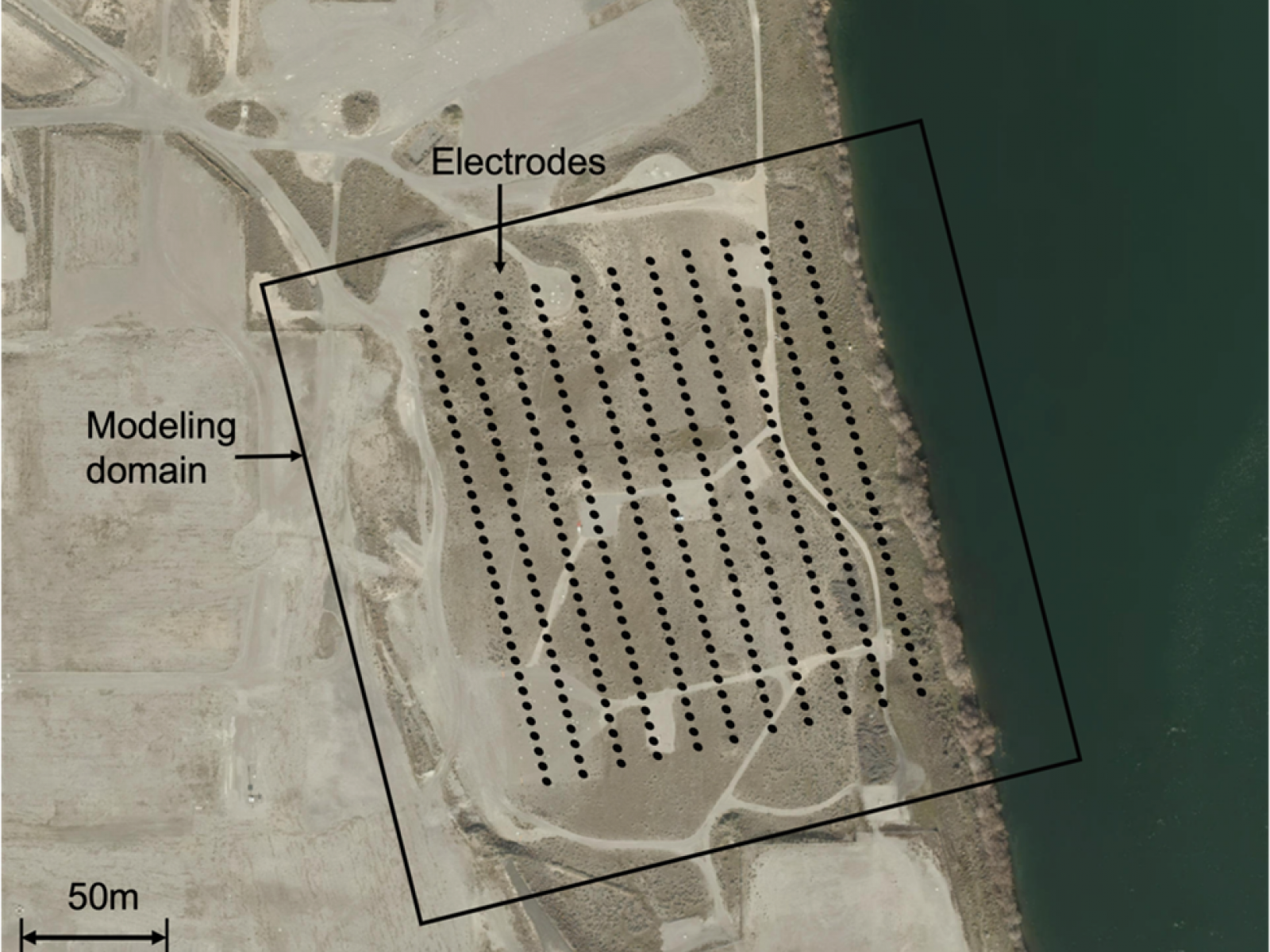Estimating Permeability from Geophysical Data Using Deep Learning
Newly developed deep learning models can estimate 3-D permeability fields from time-lapse geophysical imaging

A deep learning model trained on simulation data can estimate a 3-D permeability field with reasonable accuracy for Columbia River water intrusion at the Hanford site in Washington State.
(Image modified by Maruti Mudunuru, original satellite image courtesy of PNNL’s PHOENIX web application | DOE Richland Operations Office)
The Science
Permeability is an important subsurface property that controls how water flows below the Earth’s surface. Time-lapse electrical resistivity tomography (ERT) is a popular geophysical method to estimate 3-D permeability fields from electrical potential difference measurements. Researchers developed a scalable deep learning (DL) methodology to estimate 3‑D subsurface permeability from ERT data collected at a field site along the Hanford Reach of the Columbia River in Washington State. The trained deep neural network (DNN) models were able to estimate 3-D permeability with reasonably good accuracy.
The Impact
Accurately characterizing 3-D permeability is a significant challenge in the Earth and energy sciences. Capturing the heterogeneity in permeability field features is essential for developing realistic subsurface process models for natural and engineered systems. While traditional inversion methods are impractical for this type of high-dimensional problem, the proposed DL-based inversion method offers an effective alternative for capturing the nonlinear relationship between the 3D permeability field and the geophysical response. Once a DL model is trained on ensemble model simulation data, it can be re-used for estimating the permeability field from field observations with minimal computational cost.
Summary
New research presents a DL framework to estimate the 3-D subsurface permeability from time-lapse ERT data. To test the feasibility of the proposed framework, researchers trained DNN-based inverse mapping using ensemble simulations of coupled hydrogeophysical models. Principal component analysis was applied to encode ERT and permeability in reduced dimensions to deal with the curse of dimensionality. A DNN was then trained to map the encoded ERT images to encoded permeability. Mixup training and unsupervised learning allowed researchers to build a fast and reasonably accurate DL-based inverse model under limited simulation data. While training data generation and DL model tuning and training are still computationally expensive, the trained DL model can be re-used for generating new estimations from new observations with minimal effort. It is thus an attractive inversion alternative to traditional inverse methods.
This research used National Energy Research Scientific Computing Center resources for both the ensemble hydrogeophysical simulations and DL model training.
PNNL Contact
Xingyuan Chen, Pacific Northwest National Laboratory, xingyuan.chen@pnnl.gov
Funding
This work was funded by the ExaSheds project, which was supported by the United States Department of Energy, Office of Science, Office of Biological and Environmental Research, Earth and Environmental Systems Sciences Division, Data Management Program. This research study also used the resources of the National Energy Research Scientific Computing Center (NERSC), a U.S. Department of Energy Office of Science User Facility located at Lawrence Berkeley National Laboratory. The authors’ views and opinions expressed herein do not necessarily state or reflect those of the United States Government or any agency thereof.
Published: September 29, 2022
M. K. Mudunuru, E. L. D. Cromwell, H. Wang, and X. Chen. 2022. “Deep learning to estimate permeability using geophysical data.” Advances in Water Resources, 104272. [DOI: 10.1016/j.advwatres.2022.104272]